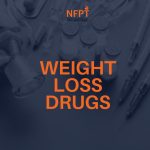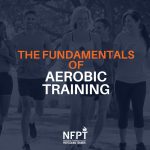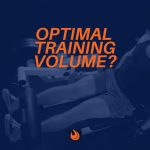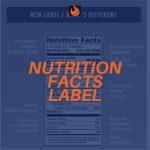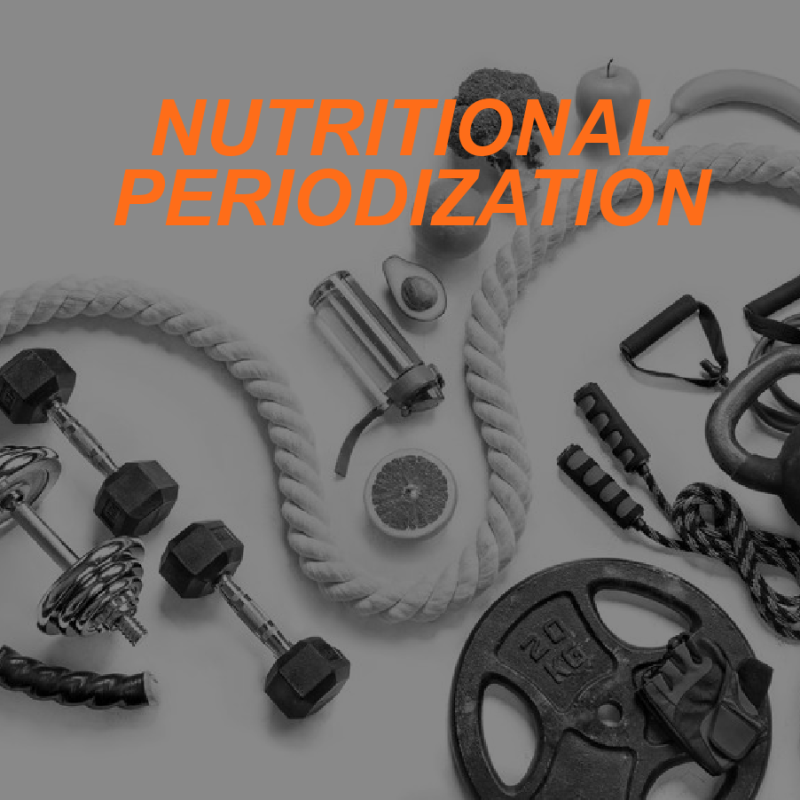
Prudent nutrition plays a key role in promoting personal training clients’ hypertrophy, power, and strength when coordinated expertly with resistance training. If we take that concept and adjust it to fit the training periodization model, personal trainers can propel an athlete’s progress light-years ahead utilizing nutritional periodization.
Pairing Food with Fitness
Over the last decade, in support of training periodization our industry embraced the emergence of the concept “nutritional periodization”. Periodization within the fitness realm refers to a division of training cycles, typically based upon a 12-month time frame. Training gets broken down into specificities: microcycles, which sometimes may last only one week; mesocycles, which typically last a quarter of the year; and macrocycles, long-range year-long planning.
The difference between cycles lies in the manipulation of training volume, frequency, intensity, and time. Experts now see the benefit of similarly matching an athlete’s nutritional needs with his training cycle, since each of these protocols places unique demands upon the athlete’s body.
In 2007, the International Association of Athletics Federations Nutrition Consensus provided the first basic guidelines for nutrition periodization. In his 2017 article entitled “Periodized Nutrition for Athletes”, Asker Jeukendrup defined this novel concept as “the planned, purposeful, and strategic use of specific nutritional interventions to enhance the adaptations targeted by individual exercise sessions or periodic training plans, or to obtain other effects that will enhance performance in the longer term.” This applies to all forms of serious and/or competitive athletics, where energy demands must get prioritized.
BMR and Energy Output
The Basal Metabolic Rate (BMR) of the human body encompasses an estimate of the energy required to achieve every cellular and tissue process that sustain daily physiological activities. This number, roughly estimated by multiplying one’s weight in kilograms by 24, must further take into account one’s energy expenditure in terms of physical output. Experts suggest the following multipliers: 1.3 for low activity/sedentary individuals, 1.4 for those who stay moderately active, and/or 1.5 for highly active and often professional bodybuilders.
Once armed with the above value, the detail that follows takes into consideration the various macronutrient requirements to match an activity level. When pairing nutrition appropriately with training periodization, one’s calories/macronutrient ratios will certainly change, in an effort to maximize favorable adaptation.
Carb-Focused Nutrition Periodization
A very important aspect of resistance training rests in the body’s ability to enhance the various metabolic pathways which serve to improve the rate/storage of adenosine triphosphate (ATP) production. Some highly trained and competitive athletes look to increase the body’s stores/availability of endogenous fuels, as well as and enhancing the body’s ability to utilize exogenous fuels consumed just before exercise.
Scientists have delved even deeper than this in their research, seeking ways to improve the delivery of nutrients and oxygen to working muscles, lower the level of by-products, and raise the body’s efficiency at producing ATP, the ultimate energy source.
The science-based athletic community has come to realize the positive effects of prudent dietary plans when paired with resistance training. We now recognize that a myriad of substrates, including muscle glycogen and free fatty acids, act as cellular regulators of the body’s adaptation to strength training, in addition to serving as muscular fuel.
More recently, the concept of periodization of CHO availability has been explained using the theoretical model of “fueling for the work required”, or adjusting CHO availability to better align with the goals/demands of that specific training session. Scientists studying in this field demonstrated how short-term (3-10 weeks) training programs, in which ~50% of workouts start with reduced muscle glycogen stores and/or provide for sub-optimal exogenous CHO, show little to no difference on training outcomes when compared to engaging in exercise sessions with ample glycogen stores.
They concluded that the concept lacks any evidence that might prove how such dietary alterations enhance training ability or improve performance. It would appear that the knowledge of just how much a particular workout specifically requires in terms of carbohydrate demands remains elusive at best; studies must continue to determine the optimal method of carb-fueling for each period within the training cycle.
Strategies to Promote CHO Utilization During Exercise
Carbohydrates from any source provide impactful fuel for all athletic performance. When compared to fat oxidation, carbohydrates can elicit ∼5.5% more ATP per liter of oxygen consumed. This knowledge laid the groundwork to which most athletes adhere: that ample availability of CHO optimally provides for the substrate needs of a training session. Still, not all sports nutritionists concur on this point.
The rationale for deliberately promoting low CHO availability in relation to a training session lies in the belief that such an environment may potentially activate signaling pathways that in turn increase adaptations such as mitochondrial biogenesis, angiogenesis, and increased lipid oxidation.
The plates below show a visual example of how to apply this protocol to your clients’ meal planning, simply through variations in consumption of carbohydrates, protein, and fat.

Consider the client seeking to maximize his adaptation process throughout the bulking phase. To increase expenditure of energy, this time period requires an increase in calories, allowing for muscle growth while also adequately supporting training intensity and/or volume. With carbohydrates catering to energy demands, protein intake stays about the same regardless of the training cycle; however, many athletes choose to up their protein consumption during competition phase, helping hormone function and the all-important recovery.
CHO Limiting
Training low, a term that refers to exercising with low-carbohydrate availability, includes reduced muscle /liver glycogen, low-carbohydrate intake post-workout, or a combination of the two. While such a practice does not always fit a traditional model of eating, the rationale makes sense: training adaptations, which come about as a result of small changes in protein synthesis, might tweak a particular phenotype and thus enhance the athlete’s performance.
Nutrition influences many of these cellular processes –transcription, translation, stable messenger RNA, unique stress signals, and enough amino acids amino acids for protein synthesis — lending even more credence to the advantage of specific consumption.
“Feeding” Off of Each Other
In a symbiotic relationship, one’s training results become a function of the macronutrient fuel entering the body, just as nutritional protocols depend upon resistance training demands/goals. Nutrition Periodization meets the energy fluctuations and goals of each training phase. While every client’s body will react differently to dietary alterations, proper nutrition periodization that matches output demands enables clients to train harder, adapt faster, build greater endurance, and ultimately, better meet their goals.
References:
International Journal of Sport Nutrition and Exercise Metabolism, 2019, 29, 141-151
www.trainingpeaks.com/blog/understanding-nutrition-periodization/
www.tandfonline.com/doi/full/10.1080/02640414.2011.574722
medium.com/@brandon_41685/nutrition-periodization-for-physique-athletes-e28e0dbf50e8
www.ncbi.nlm.nih.gov/pmc/articles/PMC5371625/
www.teamusa.org/USA-Triathlon/News/Blogs/Fuel-Station/2020/March/03/Nutrition-Periodisation
Reguant-Closa, Alba & Roesch, Andreas & Lansche, Jens & Nemecek, Thomas & Lohman, Tim & Meyer, Nanna. (2020). The Environmental Impact of the Athlete’s Plate Nutrition Education Tool. Nutrients. 12. 2484. 10.3390/nu12082484.
p13cdn4static.sharpschool.com/UserFiles/Servers/Server_143104/File/Departments/Athletics/Sports%20Performance/Nutrition/Gaines_-_Periodized_Nutrition_for_Strength_and_Power.pdf
www.sciencedirect.com/science/article/pii/S1550413118302572
gcperformancetraining.com/gc-blog/nutritional-periodization
pubmed.ncbi.nlm.nih.gov/28332115/
www.gssiweb.org/sports-science-exchange/article/sse-134-manipulating-carbohydrate-availability-to-promote-training-adaptation



